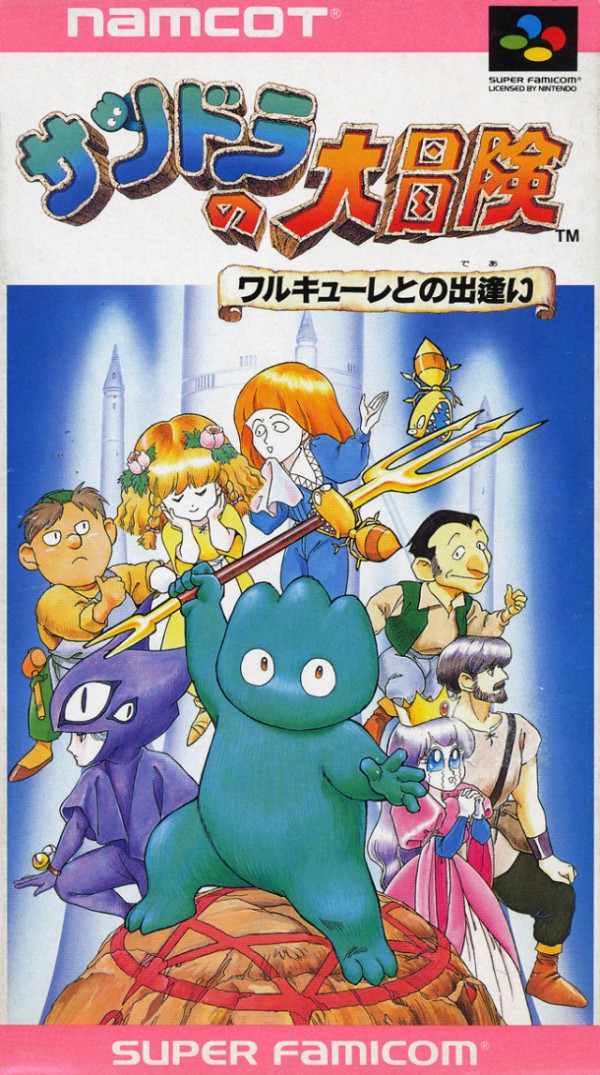
Sandra no Daibouken, or Xandra no Daibōken: Valkyrie to no Deai to give it its more proper Japanese title, or Whirlo in Europe, goes by many names. Whatever you call it, it’s one tough son of a gun. Translated as Xandra’s Great Adventure: Encounter with the Valkyrie, this is a rock hard action platformer that will test the mettle of even the most skilled gamer. As such, it’s not for everyone. Patience and persistence is the order of the day here. Although it never came to North America, it was released also in Europe as Whirlo in 1992. Super Play Magazine was very high on it, ranking it #86 on their Top 100 SNES Games list. They rated it 85%. I’m a huge fan of Super Play as readers may remember, and I’ll let them take the reigns on this one. The following review comes courtesy of Super Play.

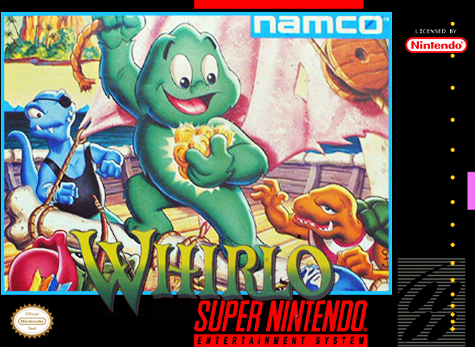
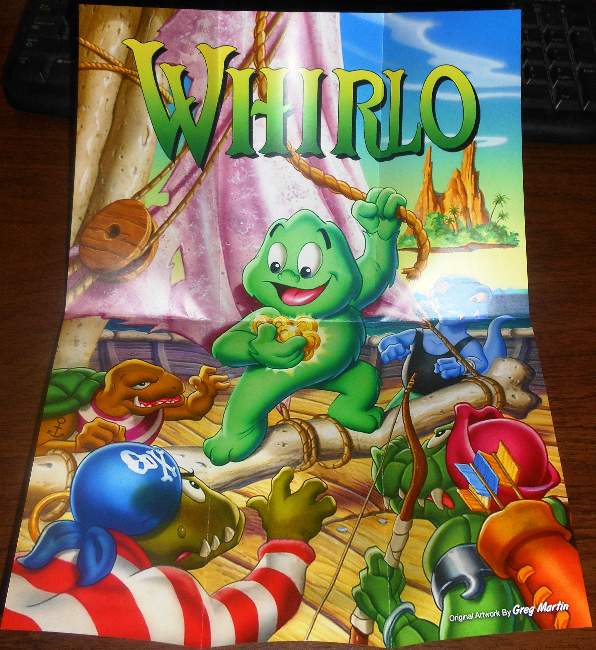
SUPER PLAY’S WHIRLO REVIEW
What initially looks like a rather poor Wonder Boy clone actually turns out to be a top-notch arcade adventure, enlivened by some very versatile controls. These take getting used to, but once learnt prove to be extremely rewarding — if a bit frustrating at times.
Pitchfork in hand, no one’s eating this blob of jelly.
Graphically, Sandra is a mixed affair, with both lovely and rather drab bits. The main sprite has consistent appeal though, and the way he can jump and land on top of baddies with his pitchfork is a joy — and a lot less disturbing than it sounds!
The gameplay is as patchy as the background graphics, however — at some points it’s simply great fun, while other bits are a real pain.
Throughout it all the generally melancholy tunes add tons to the game, even if they do get slightly repetitive. Indeed, the whole feel of the game is tear jerkingly sad — not just the music but also the general atmosphere and the plot (our hero has to collect various special herbs to help cure his dying son).
Passwords are given at regular points but it’ll still take you a fair while to find the herbs, due to the fiendishly designed levels. A real discovery, then, and a game that offers the player a lot more than it first appears. Things get better and more complicated as you progress (indeed, it’s fiendishly difficult in certain sections). You can almost feel the boy’s life draining away as you struggle with a particularly tricky section.
Occasionally, a bit of Japanese text crops up but don’t let that turn you off — understanding it all is not crucial to gameplay. This is likely to remain an obscure game in the UK, though we expect something of a cult following around it — great fun! -Jason Brookes
Graphics: 84%
Sound: 89%
Gameplay: 82%
Gamelife: 91%
Overall: 88%
Verdict: A wonderfully versatile and highly unusual game that, as a slightly bizarre trip into Japanese eccentricity and mysticism, is hard to beat. Despite some infuriating sections, this is highly recommended, especially to hardcore gamers. One thing is for certain — no one will finish this in a hurry.
CLOSING THOUGHTS
Usually I am in concurrence with Super Play when it comes to their game opinions (minus most beat ‘em ups as they were simply too harsh on that particular genre), but this is the rare case where I disagree a bit. Admittedly, Sandra no Daibouken is one of those games I still need to further explore but quite frankly, in the time I spent with it I found it simply not all that fun. My main issue is that the control could use some work, which I feel accounts partially for why it is so difficult. I don’t mind a tough fair challenge so long as the control is tight and fluid. I didn’t feel it was for Sandra no Daibouken.
On the bright side, there is a simplicity to the game that can be rather appealing. There are zero power-ups — everything you need to succeed you start the game off with. There’s also a wide variety of jumps you can perform. The game plot is intriguing as well; most SNES games didn’t have such a dark plot. I liked the idea of having to cure my dying son rather than the typical damsel in distress or save the world plot that has been beaten to death. Of course, storyline isn’t why I play platformers but in this case, it paints a somber mood for Sandra no Daibouken (in addition to the music and somewhat bleak visuals) that lend to a dreary atmosphere ideal to play on a late darkening afternoon.
There is a solid game here for sure, but I’m not sure I’d give it an 88% like Super Play did. That said, it’s definitely one of those games I’d like to replay more in-depth at some point. But for now I can’t personally vouch for this game in the way that Super Play did. As always, your mileage may vary so try it out for yourself (and leave a comment below if you’re so inclined). Tough old school 16-bit platformers your thing? Then Sandra no Daibouken might be right up your alley.
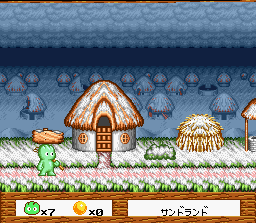
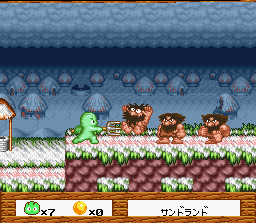
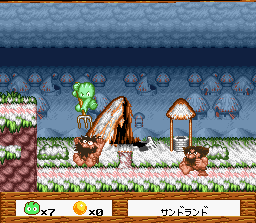
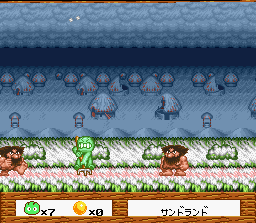
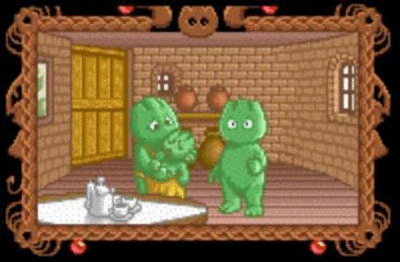
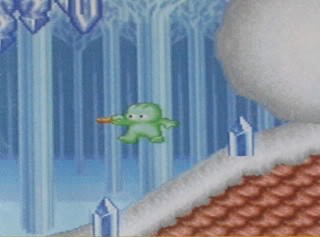
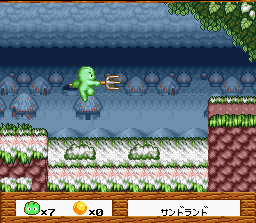
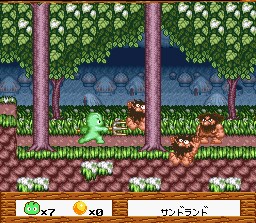
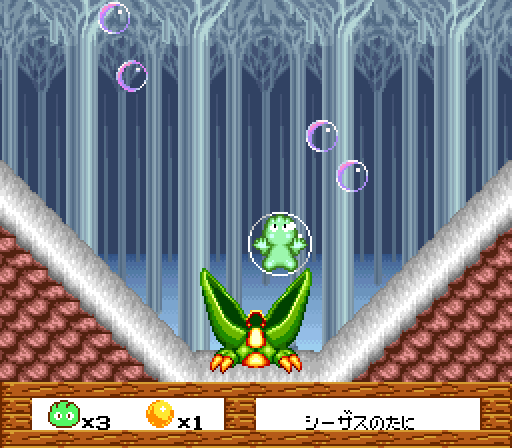
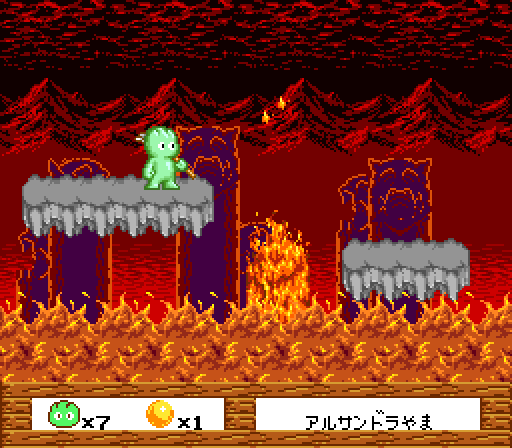


Greetings and salutations, RVGSteve, and a happy new year to you!
Ah, Namco’s Xandra no Daibōken: Valkyrie to no Deai! =) I’ll admit when I first played it in 2014 my impression of it wasn’t as high as it would be in 2016 onward when I gave it another chance partially due to being afflicted by the Fox and the Grapes Syndrome the first time around in the upward scaling waterfall scaling section which initially I thought was impossible causing me to give up after trying and failing many times. It’s not; a bit trying, sure, but not impossible, but I’m getting ahead of myself.
This is the kind of platformer that grows on you if you’re more than willing to give a chance after a less then pleasant first impression and rewards the most perseverant and resilient gamer especially once you learn to master the four jumping controls (B to jump, lightly pressing A while running to dash jump, high jumping by holding the A button down sometimes after going faster, and the whirlwind jump punch via the X button and letting go). Now, it may be unusual for there to be that many jumping controls in one game, but considering the precarious platforming and deviously thought out area designs while paying heed to the obstacles you might need to overcome they do become intuitive once you comes to grips with them–or, at least, I consider it so. I also like how once in awhile there are puzzle elements, which I greatly appreciate.
As challenging as the area designs are in this game I do like and appreciate them, there is a nice sense of trial and error when you give it a chance because if you should lose a life once you get to a certain point at least you’ll know what to do next time especially during the later stages (if duress doesn’t get to you, that is). The pastel-toned visuals are also pleasing to the eyes and have got a diverse design in terms of locale, I like the lighthearted charm of the character designs, and the password system is very helpful once you clear a stage.
What I love the most about Xandra no Daibōken however is its heavy emphasis on narrative. Platformers are generally not played for plot, but this one in particular is the proud exception as Ippaidetayo Koakuman’s story is quite gripping and engaging especially if you stick with the game; the way it starts is pretty dreary and dark all things considered, but things do look up and get significantly more hopeful as you press on.
Another strong point is the main character Krino Xandra whose selfless, compassionate, and bighearted resolve is among the things that make this Super Famiplatformer compelling. =) He’s a father who sets out of his village to find a way to save his dying infant son, even though he’s got no experience outside his home, but it becomes something more as he helps those in need along the way and in so doing becomes everyone he encounters’ ray of hope. The soundtrack especially is fantastic, Krino’s adventurous theme especially as it permeates during certain stages (and the credits) and absolutely SCREAMS selfless heroism and there is a special kind of depth to it too as if to say your quest is important and there is no turning back but at the same time it’s such an empowering listen and makes you root for him, you WANT him to save his people, you WANT him to succeed, you WANT him to defeat Zouna (YEAH, go Krino!). Though, the less said about his creepy transformation sequence when you get a game over, the better (seriously, it’s genuinely unnerving what Zouna does to him after losing your last life). Next to Argonaut Software’s Croc, he’s one of my top favorite green video game protagonists ever not simply in terms of design but character-wise as well =)
The European cover art for Whirlo is among my least favorites ever, not because it’s poorly drawn or anything (it’s not Namco’s Smash Tennis’ cover versus Super Family Tennis’ superior Super Famicover art, great tennis game by the way; seriously with that PAL one, what the…)–rather, the thing I take offense from in regards to its cover is the misleading context: yes, there is a ship section, but that’s during one stage in the second half, but it seems to suggest that it’s a swashbuckler (when that is far from the truth). Krino is supposed to be the most selfless character ever, but his PAL counterpart “Whirlo” is ogling at the gold cradled in his arms which I find to be a total betrayal to his character (also, he’s missing his rake/pitchfork, where’d he leave it?) and from what I gather Namco gave him angry eyes in-game. Why? D= What was wrong with big eyed, affable Krino Xandra? Who at Namco’s European division thought people would like to hang out with Angry Eyes all the time when in reality it would be a major turnoff? Although that’s just my personal opinion on Whirlo’s cover art.
I am glad I gave this game a second chance four years ago as it gradually grew on me to the point that it would become one of my favorites (I’d gladly say it’s an 8 title which I think is fair) and one I grew to love and enjoy and I still feel bad for giving up on it the first time back in 2014 when the first time I played Quintet’s ActRaiser 2 in 2011 I didn’t give up on IT (the irony is not lost on me). It is funny I bring that game up as there are similar elements between this game and the aforementioned (not to mention highly underappreciated) INO sequel: they are both challenging fare, are not for everyone (which hurts to say since I enjoy them both), are fun to play when you come to grips with the gameplay and area layouts and design and enemy patterns, they both take big risks, may prove overwhelming if you don’t know what to do, they don’t back down when in comes to the challenge department, they are not impossible with a little time and practice and resilience, and are highly rewarding in the long run if you choose to stick with it and persevere no matter how hard things got. A part of me would like to opine that Xandra no Daibōken is the harder of the two since it’s a one hit and you die affair, BUT on the other hand ActRaiser 2 does have some slightly harder elements (the Japanese version especially) even though there is a proper health system there.
Again though, I understand that this game won’t be for everyone and that the mileage may vary, I completely understand and respect that. But when given a proper chance, a true chance, it is a good platformer while it lasts in my humble opinion and there is a lot to like and appreciate about it =) I really commend Namco’s efforts for this one
To each their own
StarBoy! So sorry for the very delayed response. I’ve been pretty busy with lots of different things going on right now. But I did receive and read each of your comments! As always, thanks for being a loyal reader and I always appreciate your insights and opinions. Yes, this is a game that when given a true chance is pretty good. It’s hard but it can also be rewarding for the gamer who sticks with it. And you know I’m always down with Super Family Tennis! Coincidentally, my girlfriend and I just played it yesterday and had a great time playing the computer in doubles mode. That game never fails to satisfy
I might not have properly explained the jumping controls properly or gone to enough detail about them, and I apologize if that was the case; the key to survival is knowing which jumping controls to utilize and when and I’ll admit it is easy to get misstep if you’re not careful (even if you do otherwise get them down pat). There are plenty of platforms in this game that are set far above Krino’s normal jumping capacity, and what helps me personally increase his jumping up high is turning the opposite direction only to IMMEDIATELY turn back to the direction you’re going then IMMEDIATELY you hold the A or X button and let go after a sec and, TA-DA!, you make him reach his highest altitude because if you held down the A or X buttons after only moving a tiny bit then his jump won’t be as high. Although that’s just a tip of mine.
Another thing I like about this game is its sense of replay value (at one point you can choose to help one character or another, it won’t affect the ending in any way but it is nice to have an alternative option to keep things fresh), largely due to there being points of randomization in certain spots. You know how Phoenix Interactive Entertainment’s Porky Pig’s Haunted Holiday has got the random weather generator where things are visually different each time you play it? But whereas it affects the whole package in that one visually, in Namco’s Xandra no Daibōken: Valkyrie to no Deai it structurally applies to a few key handful portions which makes things exhilarating for next time especially if you’re starting the stage again via password (including THE final bit with an altered layout each time you get there the first time leading to the cure of the plague/fight against Zouna; I don’t want to give away too much, but all I’ll say is watch the stars).
Anyway, hope you have a great day, RVGSteve, take care! =)